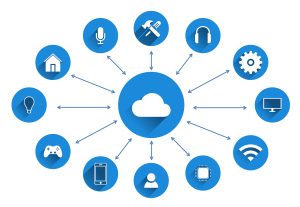Linux servers, known for their stability and security, are a staple in many IT environments However, as cyber threats evolve, relying solely on basic security measures is no longer sufficient In this article, we delve into advanced strategies and tools for securing Linux servers, targeting experienced IT professionals who seek to fortify their systems against sophisticated threats
Implementing Robust Network Security Protocols
Network security is a critical aspect of Linux server security, where the focus should be on advanced protocol management and intrusion detection systems This section discusses the implementation of robust network security protocols, emphasizing the configuration and optimization of firewalls and SSH gateways Key to this discussion is the integration of advanced firewall technologies like iptables and nftables, which provide granular control over traffic and can be tailored to specific security needs Moreover, we explore the deployment of intrusion detection systems (IDS) such as Snort or Suricata, which offer real-time traffic analysis and threat detection These tools, when configured correctly, can significantly enhance the security posture of Linux servers by identifying and mitigating potential threats before they cause harm The importance of regular updates and patches for these systems is also highlighted, as staying current with the latest security developments is crucial in safeguarding against emerging vulnerabilities and exploits
Hardening Linux Servers with Customized Security Measures
Beyond network security, server hardening is a vital step in creating a resilient Linux environment This section provides insights into customized security measures for Linux servers, focusing on the importance of system updates, user management, and access control Effective server hardening involves regular system updates to patch vulnerabilities, as well as stringent user management protocols to prevent unauthorized access Emphasis is placed on the principle of least privilege, ensuring that users and processes only have the permissions necessary to perform their tasks Additionally, we delve into advanced techniques such as kernel hardening and the use of Mandatory Access Control (MAC) systems like SELinux and AppArmor These tools offer an additional layer of security by enforcing strict controls over how applications and users interact with the system, significantly reducing the risk of exploitation Finally, this section addresses the need for regular security audits and compliance checks to ensure that the server remains secure and adheres to industry best practices
Advanced Monitoring and Logging for Proactive Security Management
In the realm of server security, proactive monitoring and logging are indispensable for early detection and response to potential threats This segment focuses on the importance of setting up advanced monitoring systems and effective logging strategies for Linux servers Detailed insights into configuring and utilizing tools like Nagios, Zabbix, or Prometheus for comprehensive monitoring are provided These tools enable IT professionals to keep a close watch on server performance and security, sending alerts in case of any anomalies or potential security breaches Additionally, the importance of log management using solutions like Logstash, Elasticsearch, and Kibana is discussed Proper log management not only aids in troubleshooting but also plays a crucial role in security analysis, helping in the quick identification of patterns indicative of security incidents
Utilizing Encryption and Authentication Techniques for Enhanced Security
This section delves into the critical role of encryption and authentication in securing Linux servers A discussion on implementing strong encryption methods for data at rest and in transit is presented, highlighting the use of tools like LUKS for disk encryption and SSL/TLS for secure communication Additionally, the importance of robust authentication mechanisms is underscored, focusing on the implementation of two-factor authentication (2FA) and the use of public key infrastructure (PKI) for secure access These techniques not only help in safeguarding sensitive data but also ensure that access to the server is tightly controlled and monitored
To summarize the key points discussed, here is a list of essential advanced security measures for Linux servers:
- Configure advanced firewall technologies (iptables, nftables)
- Deploy real-time intrusion detection systems (Snort, Suricata)
- Regularly update systems and apply security patches
- Enforce strict user management and access controls
- Implement kernel hardening and Mandatory Access Control (SELinux, AppArmor)
- Conduct regular security audits and compliance checks
- Set up comprehensive monitoring and alerting systems (Nagios, Zabbix, Prometheus)
- Manage logs effectively for security analysis (Logstash, Elasticsearch, Kibana)
- Utilize strong encryption methods (LUKS, SSL/TLS)
- Implement robust authentication mechanisms (2FA, PKI)
Future-Proofing Linux Server Security – Staying Ahead of Emerging Threats
The final section of this article addresses the importance of staying ahead of emerging threats in the ever-evolving landscape of cybersecurity Here, we explore the significance of continuous learning and adaptation in the field of Linux server security The discussion includes insights into the latest trends in cyber threats and the importance of keeping abreast with new security technologies and methodologies Additionally, the role of community involvement and the benefits of contributing to and learning from open-source security projects are highlighted This proactive approach ensures that IT professionals are not only well-equipped to deal with current threats but are also prepared for future challenges in server security
In conclusion, advanced Linux server security is a dynamic and ongoing process that requires a combination of robust technical measures, continuous monitoring, and a proactive mindset By incorporating these advanced strategies and staying informed about the latest developments in cybersecurity, IT professionals can effectively secure their Linux servers against a wide array of sophisticated threats.


